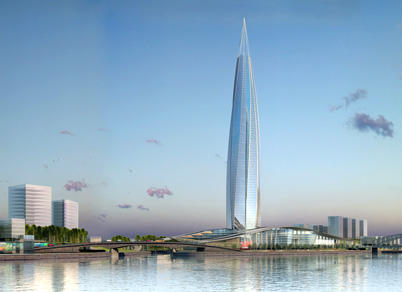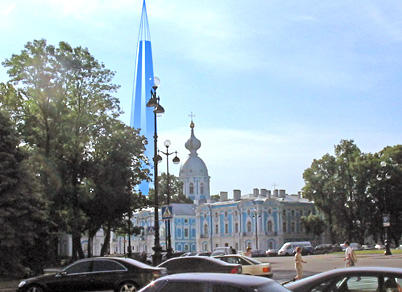St. Petersburg Historic Skyline
2008 World Monuments Watch
Much loved by architectural historians and its inhabitants alike, St. Petersburg is often called the "Venice of the North," with its numerous canals and more than 400 bridges. A vast urban project begun under Peter the Great in 1703, St. Petersburg was also an experimental playground for the leading European architects of the eighteenth and nineteenth centuries. Its historic architecture is a harmonious blend of Baroque and neoclassical styles, which can be seen in such well-known buildings as the Admiralty, the Winter Palace, and the Marble Palace. Characterized by its low city skyline and historic integrity, the historic center of St. Petersburg was inscribed on the UNESCO World Heritage List in 1990. Gazprom, Russia's largest oil company, announced plans to build a 400-meter-high tower—formerly known as Gazprom City and since renamed the Okhta Center—which will dramatically change the skyline of historic St. Petersburg. Despite the fact that there is currently a law prohibiting new buildings higher than 48 meters in this area, the Gazprom-city project, if it goes forward, could establish a dangerous precedent of inappropriate siting of tower blocks in historic towns. Furthermore, the project could jeopardize the historic city center's UNESCO World Heritage status.
Since the Watch
As of December 2008, the construction of Gazprom's proposed 1,299-foot-tall skyscraper in St. Petersburg has been delayed and its future cast into doubt in the face of the global economic crisis. As of December 2010, Gazprom's plans to build the Okhta Centre have been scrapped and the project will be moved to a different location. St. Petersburg Governor Valentina Matviyenko said that the government would re-impose the ban on tall buildings in St. Petersburg, which it had lifted in order for Gazprom to build the 1,300-foot-high tower.



